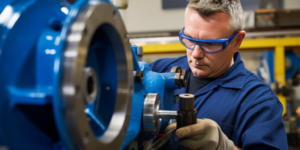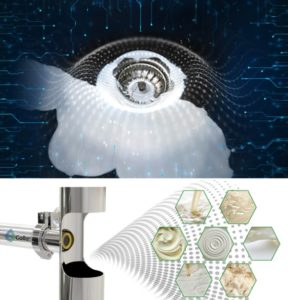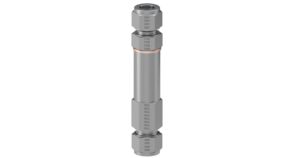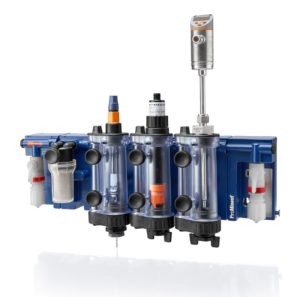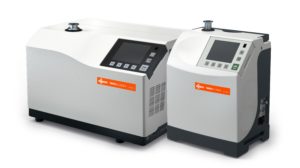Testing the leak tightness of RFID transponders in the production process

CETA Testsysteme GmbH is testing the leak tightness of RFID transponders in the production process. (Image source: CETA Testsysteme GmbH / Albert Lozano - Shutterstock.com)
This makes this method suitable for a wide range of applications (access control, work safety, traceability, medical technology, explosion protection "Ex"). In the automotive sector, wireless RFID sensors are used for monitoring functions (e.g. wheel rotation speed, tire pressure monitoring).
RFID transponders are available in various sizes and different designs. Depending on the area of application, they must be designed accordingly robustly. And, depending on the application, they must be sealed against water and moisture. As part of quality control, these products are tested for leaks during the production process (100 % inline routine testing).
The RFID transponder consists of an encapsulated housing with integrated electronics. The two halves of the housing are often ultrasonically welded together. This encloses an "air cushion" that protects the electronics. The housing must be leak-tight so that no moisture can penetrate. Due to the usually flat small housing design (typically 5 to 10 cm³ outer volume) and the small inner volume (approx. 0.3 to 1 cm³), high-resolution measurement technology is required.
The differential pressure tester CETATEST 515 in the variant "sealed component, high resolution" was especially developed for the process reliable leak test of small volume test parts and the detection of very small volume differences. Hereby highly sensitive pressure sensors and a measuring technique optimized for the detection of smallest volume differences are used. For example, volume differences of only 0.03 cm³ can be reliably resolved in a basic volume of 10 cm³ (0.03 cm³ corresponds to the volume of an O-ring with 12 mm diameter and 1 mm thickness).
Encapsulated test parts are tested in a hood which is pressurized, whereby the pressure loss into the interior of the test part caused by leakage is measured. Attention must be paid here: If the test part has a gross leak (e.g. housing defect), it is filled directly during the filling phase of the hood. In this case only the tightness of the hood surrounding the test part would be tested. Thus the test process consists of two steps: first the gross leak detection followed by fine leak testing. Typical test pressures are between 100 and 500 mbar. The requirements for the leak-tightness (permissible leakage rate) result from the application area of the transponder.
The CETATEST 515 is successfully used for the inline leak test of RFID transponders. The round transponder has a diameter of 30 mm and is 6 mm thick. It should be waterproof at a pressure of 200 mbar. For water tightness an air leakage rate of 0.01 mbar*l/s (corresponding to 0.6 cm³/min) can be used, which is commonly used in industry. The external volume of the transponder is 4.24 cm³. The near-contour test hood (0.5 mm air gap around the test part) has an empty volume of 5.28 cm³. Hereby the clear identification of gross leak test parts is possible, where in case of a gross leakage the inner volume of only 0,31 cm³ is filled.
For a borderline test part with a leakage rate of 0.6 cm³/min, a temporal pressure loss of 142 Pa/s results, which, however, can be resolved without any problems.
Both tests (i.e. gross and fine leakage test) can be performed in a total test time of less than 3 seconds. In a measurement system analysis, a Cg-value (capability index) of significantly greater than 5 is achieved. It is also be possible to detect even a significantly lower leakage rate in a process-safe manner, which underlines the efficiency of this testing device.
The CETATEST 515 is delivered with an internationally accepted DAkkS calibration certificate (conform to DIN EN / ISO IEC 17025) and a 3 years warranty.
Source: CETA Testsysteme GmbH

